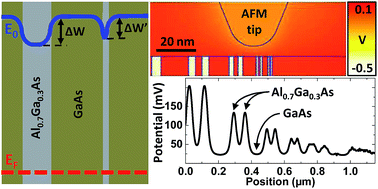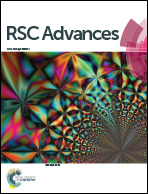Electronic structure investigation of Al0.7Ga0.3As/GaAs nanometric heterostructures by Kelvin force microscopy
Abstract
Kelvin force microscopy provides a spatially resolved measurement of the surface potential, which is related to the energetic band structure of a material. The goal of this work is to investigate the surface potential on Al0.7Ga0.3As and GaAs heterostructures with a decreasing layer thickness up to a few nanometers. We show that all the Kelvin force microscopy measurements on such a structure show a decreasing contrast relative to the layer thickness which remains the same despite the fact that measurements are done with various atomic force microscopy tip apexes. We prove that this contrast limitation is not due to the resolution limit of the Kelvin force microscopy technique, but is due to an intrinsic property of the sample. We evaluate by a self-consistent simulation, that the depletion layers located at the Al0.7Ga0.3As and GaAs interfaces of the narrowest stripes recover each other, which results in the partial or total loss of the contrast between Al0.7Ga0.3As and GaAs layers. Consequently, by Kelvin force microscopy we are able to detect the surface potential signal in the nanometer scale which is induced by the band bending between Al0.7Ga0.3As and GaAs and does not depend only on the experimental setup.


 Please wait while we load your content...
Please wait while we load your content...